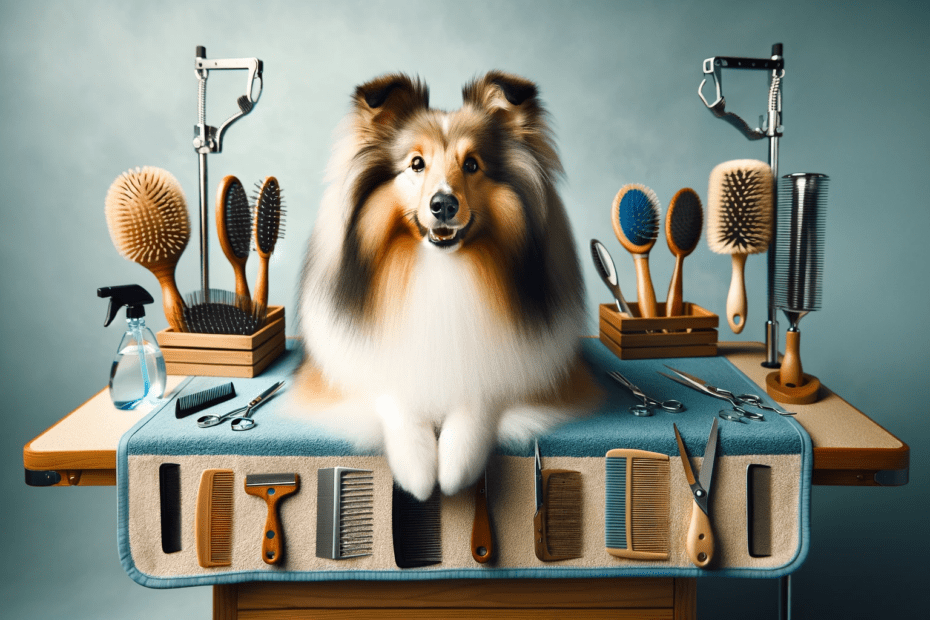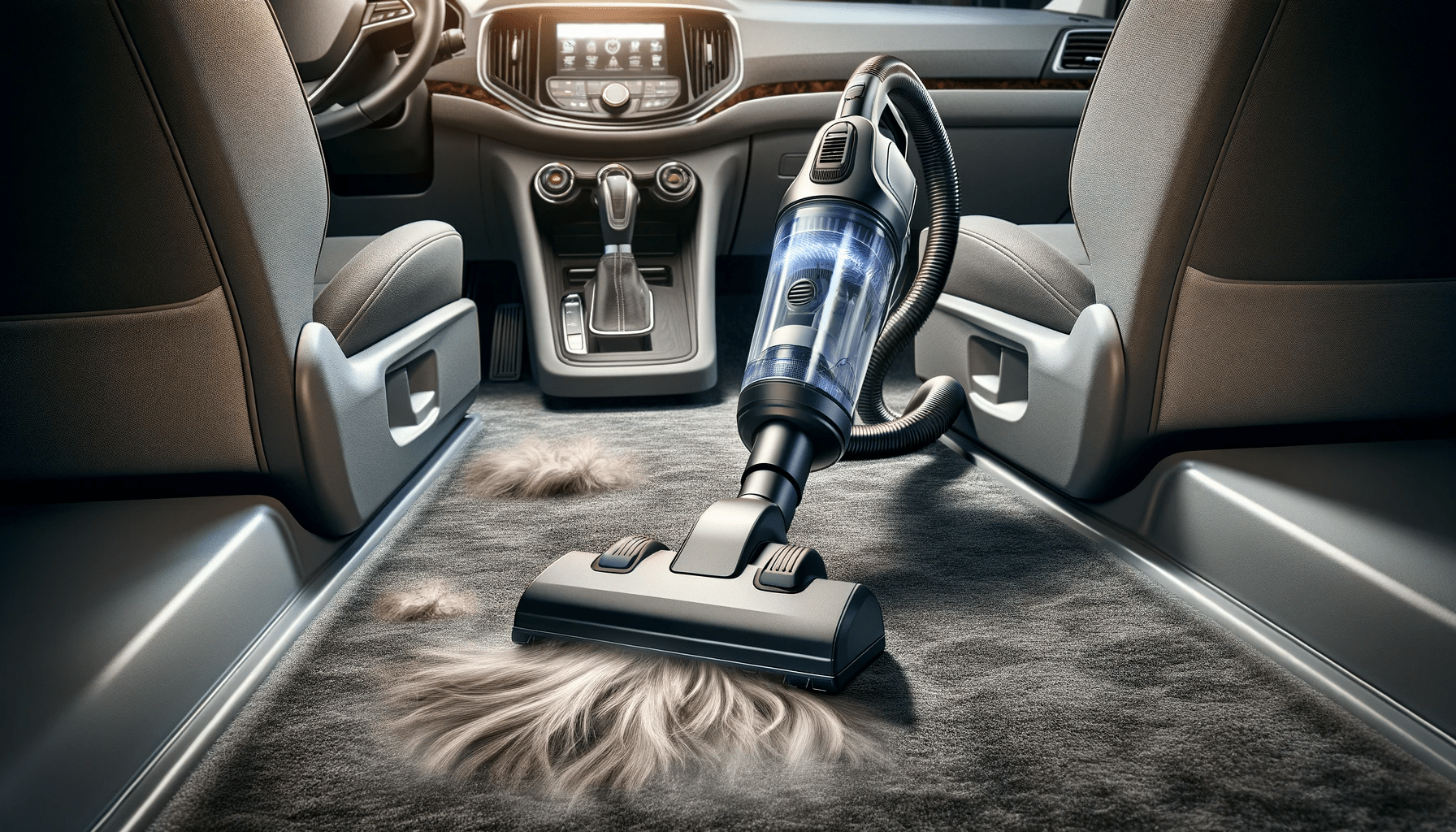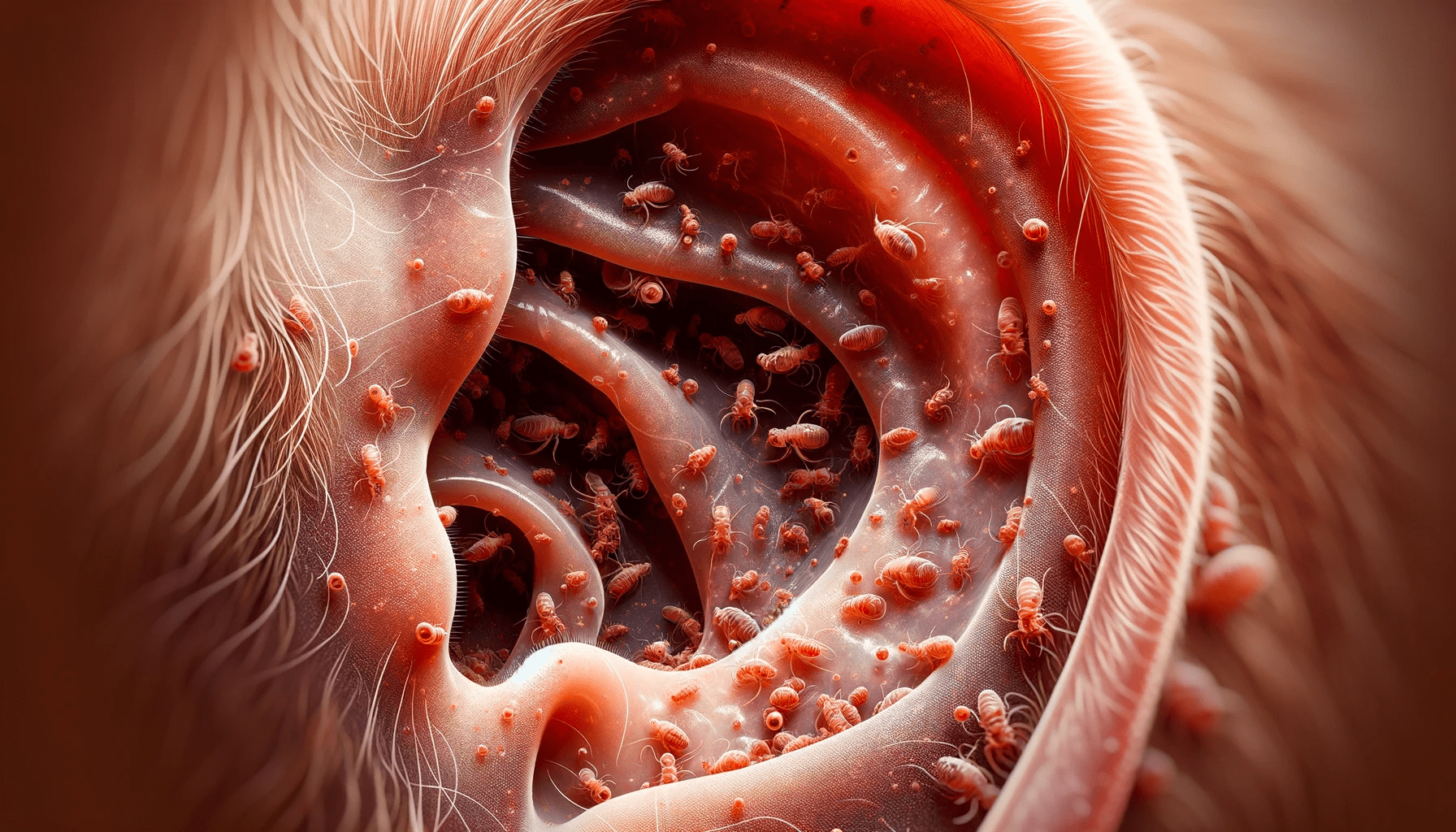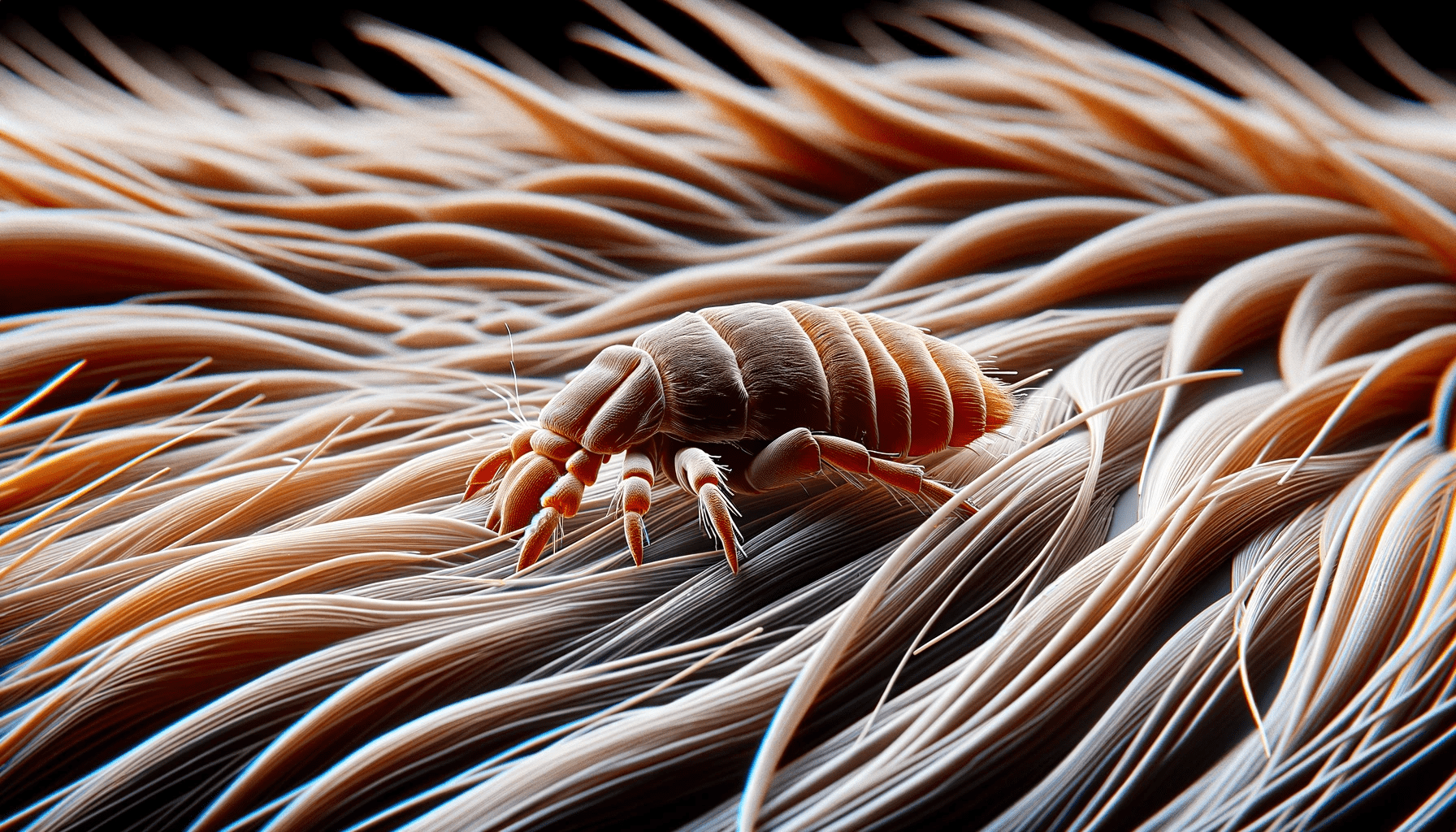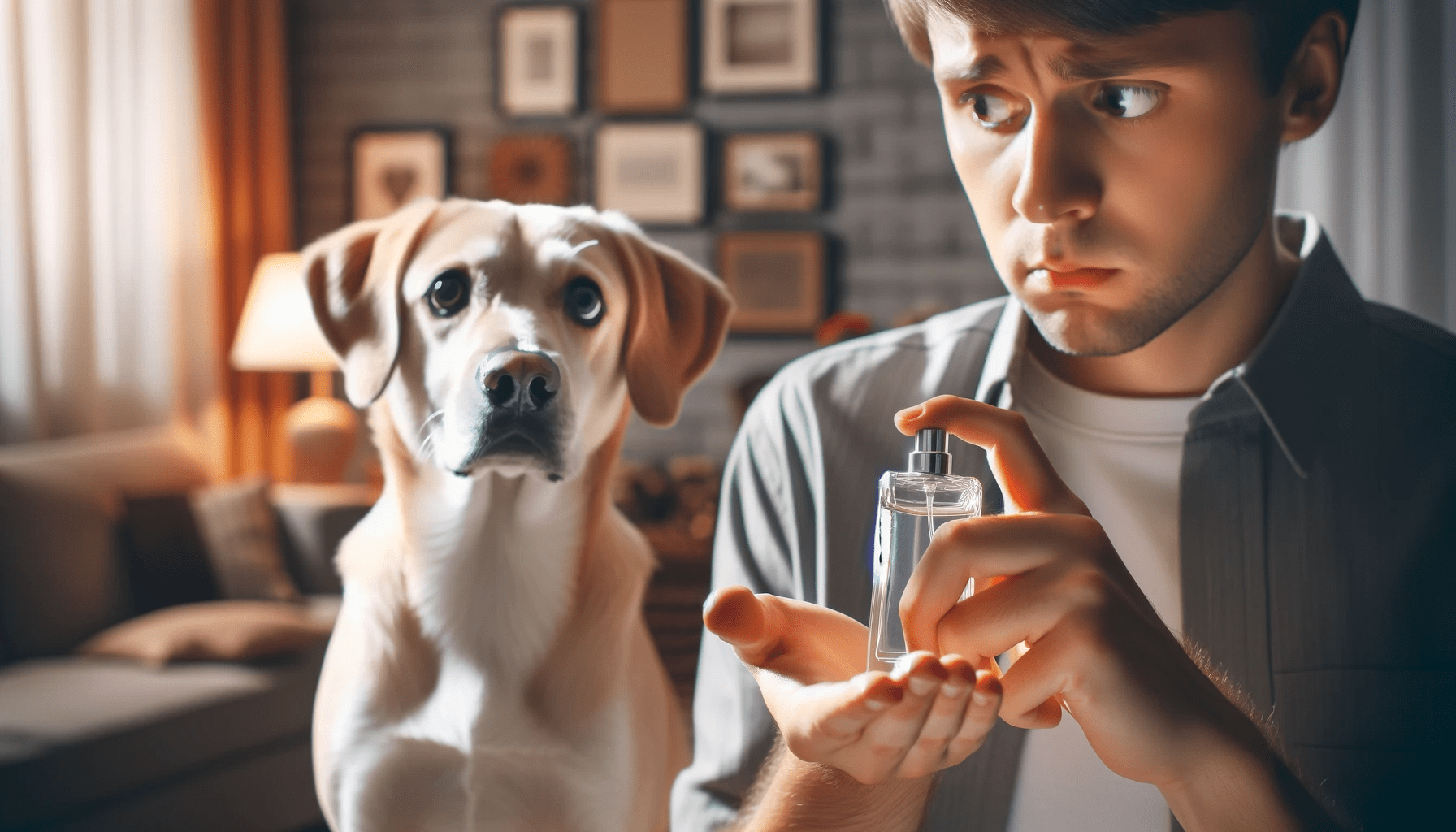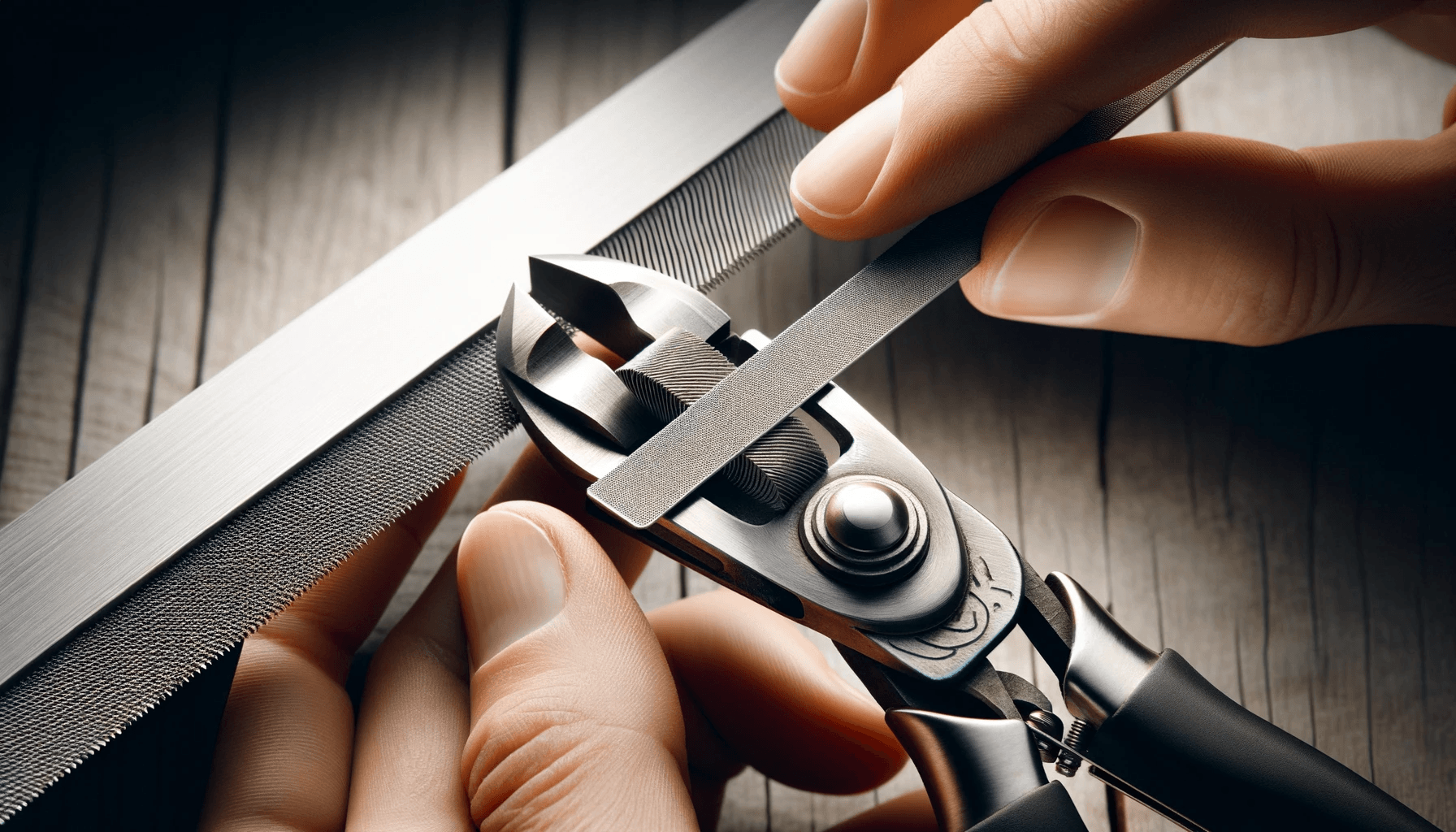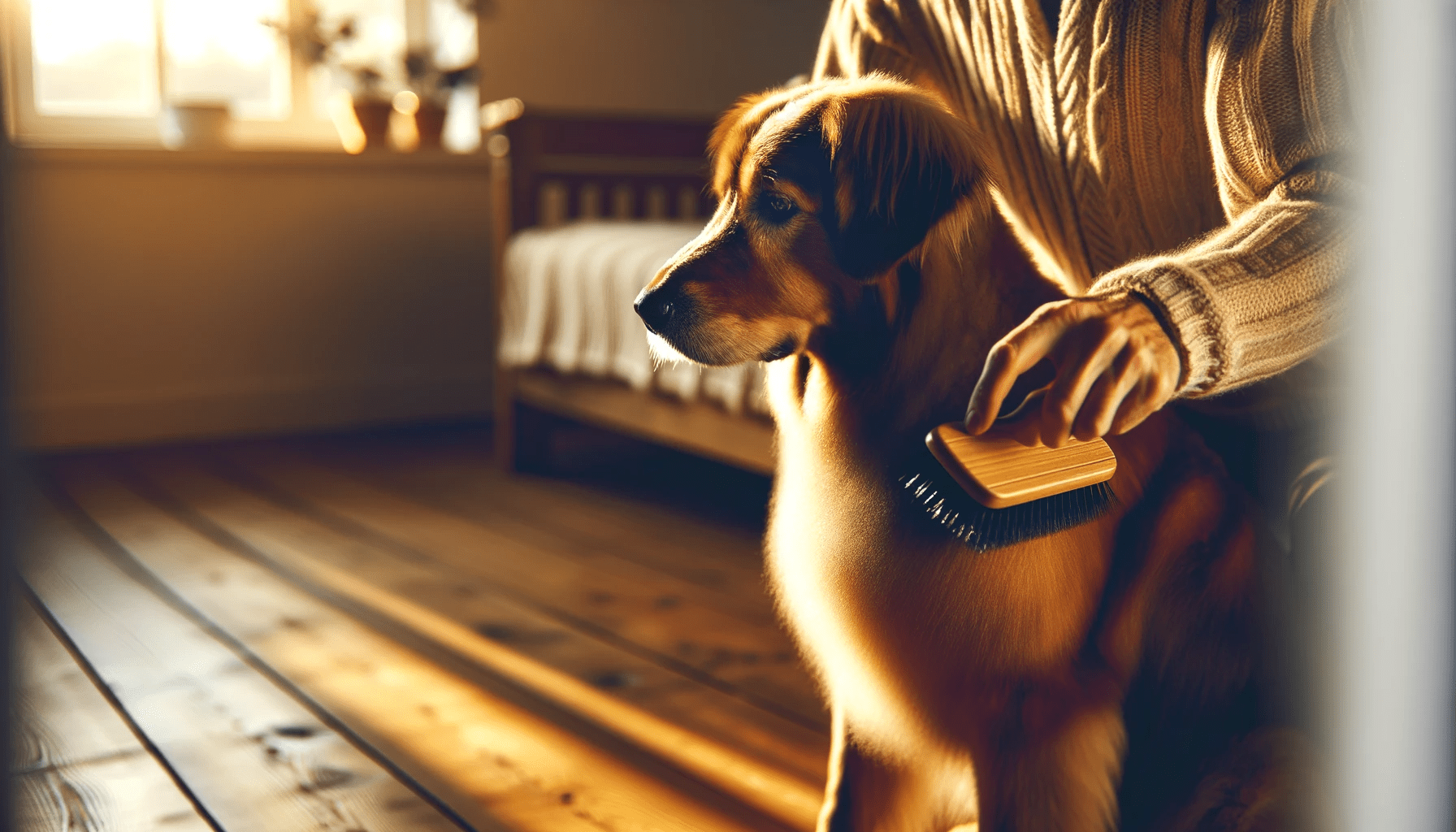Are you struggling to keep up with grooming your long-haired dog? Look no further! We've got you covered with 15 essential grooming hacks that will make your life easier.
From brushing techniques to choosing the right shampoo, we'll provide you with all the tips and tricks you need to keep your furry friend looking their best.
Say goodbye to tangles, mats, and odor, and say hello to a well-groomed pup. Let's get started!
Key Takeaways
- Choose a suitable brush or comb for your dog's long hair
- Regularly brush your dog's hair to prevent tangles and distribute natural oils
- Use a dematting tool and approach stubborn tangles with care
- Gather all necessary supplies and brush thoroughly before bathing
Brushing Techniques
Start by choosing a suitable brush or comb for your dog's long hair. When it comes to brushing techniques, proper tools are essential for tangle prevention and coat conditioning. For dogs with long hair, a slicker brush or a wide-toothed comb is recommended. A slicker brush has fine, short wires that can penetrate the densest coats, removing tangles and preventing matting. On the other hand, a wide-toothed comb is useful for detangling and removing loose hair without causing discomfort to your furry friend.
To begin, gently run the brush or comb through your dog's hair, starting from the top and working your way down. Take your time and be careful not to pull or tug too hard, as this can cause discomfort or pain. If you encounter any tangles, hold the hair near the roots and gently work through the tangle with your fingers or the comb, starting from the bottom and working your way up. This method helps avoid any unnecessary pain or discomfort for your dog.
Regular brushing not only prevents tangles but also helps distribute the natural oils on your dog's coat, promoting a healthy and shiny appearance. It also stimulates the skin, promoting blood circulation and overall skin health. Remember to be patient and make grooming sessions a positive experience for both you and your dog.
Tangle and Mat Removal
To effectively remove tangles and mats from your dog's long hair, employ the use of a dematting tool. Tangles and mats can be a common issue for dogs with long hair, but with the right techniques, you can keep your dog's coat looking smooth and beautiful.
Prevention is key when it comes to tangles, so make sure to brush your dog's hair regularly to prevent the formation of mats. Start by using a slicker brush to remove any loose hairs and gently detangle any knots.
If you encounter a stubborn tangle or mat, it's important to approach it with care. Use a dematting tool, which has specially designed blades to safely and effectively remove tangles without causing discomfort to your dog. Remember to work in small sections and be patient.
Apply a detangling spray or conditioner to help loosen the tangle and make it easier to comb through. Gently work through the tangle with your dematting tool, starting from the outer edges and working your way inwards.
Once the tangle is removed, continue to brush your dog's hair regularly to prevent future tangles. By following these simple tangle prevention and detangling techniques, you can keep your dog's long hair looking healthy and tangle-free.
Bathing Tips
Make bathing your dog with long hair a breeze by following these simple tips:
- Prepare ahead of time: Before bath time, gather all the necessary supplies such as dog shampoo, conditioner, towels, and a brush. This way, you'll have everything within reach and won't have to leave your dog unattended.
- Brush before bathing: Long-haired dogs are prone to tangles and mats, so it's essential to brush them thoroughly before bathing. This will help remove any loose hair and prevent further matting during the bath.
- Use lukewarm water: Dogs are sensitive to extreme temperatures, so ensure the water is neither too hot nor too cold. Lukewarm water is ideal for a comfortable bathing experience for your furry friend.
- Be gentle and thorough: When applying shampoo and conditioner, massage them into the coat gently, making sure to reach all areas, especially the underbelly and tail. Rinse thoroughly to remove all product residue, as leftover shampoo can cause skin irritations.
Maintaining the right water temperature and following these bathing tips will make the process smoother for both you and your long-haired dog. Remember, a clean and well-groomed dog is a happy and healthy one!
Choosing the Right Shampoo
When it comes to choosing the right shampoo for your long-haired dog, you need to consider a few important factors.
First, decide between a gentle shampoo or a medicated one, depending on your dog's specific needs.
Next, consider whether you prefer a scented or unscented shampoo, and whether your dog has sensitive skin that requires a special formula.
Gentle Vs. Medicated Shampoos
Choose the shampoo that suits your dog's needs by considering the gentle and medicated options available. When it comes to grooming your dog with long hair, the type of shampoo you use is crucial. Here are some important factors to consider when choosing between gentle and medicated shampoos:
- Gentle Shampoos: These shampoos are formulated to be mild and gentle on your dog's skin. They're suitable for regular use and help maintain a healthy coat without causing any irritation.
- Medicated Shampoos: These shampoos are specifically designed to treat certain skin conditions or to address specific issues like fleas, ticks, or allergies. They contain active ingredients that target and alleviate these problems.
- Proper Ear Cleaning Techniques: Regardless of the type of shampoo you choose, it's essential to clean your dog's ears properly. Use a gentle ear cleaner and follow the recommended guidelines to prevent infections and maintain good ear health.
- Consult Your Vet: If you're unsure about which shampoo to use, it's always a good idea to consult your veterinarian. They can provide guidance based on your dog's specific needs and help you choose the best shampoo for them.
Scented or Unscented
To find the perfect shampoo for your long-haired dog, consider whether you prefer scented or unscented options.
Scented grooming products can provide a pleasant smell that lingers on your dog's coat after bathing. These shampoos often contain essential oils or fragrances that can help mask any unpleasant odors your dog may have. Additionally, scented grooming products can leave your dog's coat smelling fresh and clean for longer periods. However, it's important to note that some dogs may have sensitive skin or allergies to certain fragrances, so it's always best to choose a shampoo that's specifically formulated for dogs.
On the other hand, unscented shampoos are a great option for dogs with sensitive skin or allergies, as they're free from added fragrances that could potentially irritate their skin.
Ultimately, the choice between scented and unscented grooming products depends on your personal preference and your dog's specific needs.
Shampoo for Sensitive Skin?
If your long-haired dog has sensitive skin, finding the right shampoo is essential for maintaining their coat's health and cleanliness. Sensitive skin care requires using hypoallergenic shampoos that are gentle and soothing. Here are four factors to consider when choosing the right shampoo for your dog:
- Ingredients: Look for shampoos that are free from harsh chemicals and fragrances, as these can irritate sensitive skin.
- pH Balance: Opt for shampoos with a neutral pH level to prevent further irritation and maintain the natural balance of your dog's skin.
- Moisturizing Properties: Choose shampoos that contain natural moisturizers like aloe vera or oatmeal, which can help soothe and hydrate sensitive skin.
- Vet Approval: Consult your veterinarian for recommendations on specific hypoallergenic shampoos that are suitable for your dog's sensitive skin.
Drying Methods
When it comes to drying your long-haired dog, you may be wondering whether to use a towel or a blow dryer. Both methods have their advantages, but it ultimately depends on your dog's preferences and needs.
Additionally, air drying can be beneficial for your dog's coat and skin health. By choosing the right drying method, you can also prevent that unpleasant wet dog smell.
Towel Vs. Blow Dryer
Use a towel to dry your dog's long hair after bathing instead of using a blow dryer. While both methods have their pros and cons, using a towel is generally considered a safer and more convenient option.
Here are a few reasons why:
- Less noise and stress: Blow dryers can be loud and intimidating for dogs, causing unnecessary stress during grooming sessions. Towel drying provides a calmer and quieter experience.
- Reduced risk of overheating: Blow dryers can generate high temperatures that may potentially harm your dog's sensitive skin. Towel drying eliminates the risk of overheating and ensures a safer grooming process.
- Cost-effective: Towels are readily available and cost-effective compared to purchasing a blow dryer. It's a budget-friendly option for regular grooming sessions.
- Enhanced bonding time: Towel drying allows for intimate physical contact between you and your dog, strengthening the bond and trust between you.
To ensure the best results, pat your dog's coat gently with a towel, removing as much moisture as possible. Remember to use a clean, absorbent towel to avoid transferring dirt or debris back onto your dog's coat.
Air Drying Benefits
To maximize the benefits of air drying, simply allow your dog's long hair to naturally dry after bathing. Air drying is a simple and effective technique that offers several benefits for your furry friend.
First and foremost, it helps to maintain the natural oils in your dog's coat, which are essential for keeping the hair healthy and shiny. Unlike towel drying or blow drying, air drying is a gentle method that minimizes the risk of damaging the hair follicles.
It also reduces the chances of tangling or matting, as the hair isn't being manipulated or rubbed vigorously. Additionally, air drying allows the coat to dry evenly, preventing any moisture from getting trapped, which can lead to skin irritations or infections.
Preventing Wet Dog Smell
To prevent the dreaded wet dog smell, try using a quick and efficient drying method that will leave your pup smelling fresh and clean. Here are four effective ways to prevent wet dog smell and keep your furry friend smelling great:
- Towel drying: After a bath or a rainy walk, use a clean towel to gently pat your dog's fur dry. Avoid rubbing vigorously, as this can tangle the hair and create knots.
- Blow drying: Invest in a good quality pet dryer or use a human hair dryer on the lowest setting. Keep the dryer at a safe distance from your dog's skin to prevent overheating.
- Absorbent products: Use specially designed absorbent products, such as pet drying towels or microfiber robes, to soak up excess moisture from your dog's fur.
- Air drying: If the weather permits, let your dog air dry outside. This can help prevent wet dog smell by allowing the natural airflow to dry the fur thoroughly.
Trimming Long Hair
Start by carefully combing through your dog's long hair to remove any tangles or mats. Once you have prepared the hair, it's time to trim those long locks.
When it comes to trimming techniques, it's important to be cautious and gentle to avoid hair breakage. One effective technique is to use thinning shears. These specialized scissors have teeth-like blades that help to remove bulk without leaving a blunt edge.
Another technique is known as the scissor over comb method, where you hold a comb against the skin and trim the hair above it. This helps to maintain a consistent length and prevent uneven cuts.
Remember to trim small sections at a time and take breaks to assess the length and shape. Always make sure to use sharp, clean scissors to avoid pulling or tearing the hair.
Dealing With Shedding
To deal with shedding, you can take steps to minimize the amount of hair your dog leaves behind. Here are four effective ways to prevent excessive shedding and manage furballs:
- Regular brushing: Brushing your dog's coat daily helps to remove loose and dead hair, reducing the amount of shedding. Use a brush specifically designed for your dog's hair type to ensure effective results.
- Healthy diet: Providing your dog with a balanced and nutritious diet is essential for maintaining a healthy coat. Include omega-3 fatty acids in their diet, as they promote healthy skin and reduce shedding.
- Bathing and conditioning: Regularly bathing your dog with a gentle shampoo and conditioner helps to remove loose hair and keep their coat clean. Use products that are specifically formulated for dogs to avoid skin irritation.
- Supplements: Adding supplements such as biotin or fish oil to your dog's diet can help improve coat health and reduce shedding. Consult with your veterinarian to determine the best supplements for your dog.
Preventing Hair Knots
To prevent hair knots in your dog's long hair, you need to employ effective brushing techniques. Regularly brush your dog's hair to remove any tangles or mats and prevent them from forming in the first place.
Additionally, using detangling products can help make the brushing process easier and smoother.
Lastly, establish a regular grooming schedule to ensure that your dog's hair is always well-maintained and free from knots.
Brushing Techniques
To prevent hair knots in your dog's long hair, make sure to regularly brush their coat using proper brushing techniques. Here are some essential tips to help you keep your furry friend's hair knot-free:
- Brushing frequency: Long-haired dogs require more frequent brushing compared to short-haired breeds. Aim to brush your dog's coat at least once or twice a week to prevent tangles and matting.
- Types of brushes for long-haired dogs: Invest in the right tools for your dog's coat type. Slicker brushes are great for removing loose hair and preventing mats. A wide-toothed comb can help detangle any knots gently. Additionally, consider using a de-shedding tool to reduce shedding and keep the hair manageable.
- Start from the base: When brushing your dog's hair, always start from the base, near the skin. This will help you gradually work through any tangles without causing discomfort or pain.
- Be gentle and patient: Take your time and be gentle when brushing your dog's long hair. Use short, gentle strokes and reward your dog with treats and praise to make the grooming experience positive.
Detangling Products
Try using a detangling spray or conditioner to prevent hair knots in your dog's long hair. These products are specifically designed to make detangling easier and minimize hair breakage.
Detangling sprays work by lubricating the hair strands, making them slippery and easier to comb through.
Conditioners, on the other hand, provide moisture to the hair, making it more pliable and less prone to tangling.
When using detangling products, it's important to follow the instructions on the label and apply them evenly throughout your dog's coat.
Additionally, you can use detangling tools such as a wide-toothed comb or a slicker brush to gently work through any knots or tangles.
Remember to be patient and gentle when detangling your dog's hair to avoid causing any discomfort or pain.
Regular Grooming Schedule
Establish a regular grooming schedule to prevent hair knots in your dog's long hair. Regular grooming not only keeps your dog's coat looking neat and beautiful but also provides several benefits for their overall health and well-being. Here are four essential reasons why you should stick to a regular grooming frequency:
- Prevents hair knots: Regular grooming helps to detangle and remove any knots or mats in your dog's long hair, preventing them from becoming more tangled and causing discomfort to your furry friend.
- Maintains a healthy coat: Regular grooming promotes a healthy coat by removing dead hair, dirt, and debris, allowing fresh air to circulate and preventing skin issues.
- Reduces shedding: By regularly brushing your dog's hair, you can minimize shedding and keep your home cleaner.
- Bonding time: Grooming sessions provide an opportunity to bond with your dog, strengthening your relationship and enhancing trust.
Maintaining a Healthy Coat
Achieving a lustrous and vibrant coat requires consistent care and attention to the overall health of your dog's fur. One of the most important aspects of maintaining a healthy coat is regular brushing.
Long-haired dogs should be brushed at least two to three times a week to prevent tangles and matting. Brushing not only removes loose hair and dirt but also stimulates the skin and promotes healthy hair growth. Use a slicker brush or a comb with wide teeth to gently work through the fur, starting from the roots and moving towards the ends.
Pay special attention to areas prone to tangles, such as behind the ears, under the armpits, and around the tail. If you encounter a knot or tangle, use your fingers or a dematting tool to carefully loosen it before continuing to brush.
Regular brushing also helps distribute natural oils throughout the coat, keeping it moisturized and shiny. By incorporating brushing into your grooming routine and preventing tangles, you can ensure that your dog's long hair remains healthy and beautiful.
Ear Cleaning Tricks
To keep your long-haired dog's ears healthy, it's important to prevent ear infections and practice proper ear cleaning techniques. Regularly inspect your dog's ears for redness, discharge, or foul odor, as these may be signs of an infection.
When cleaning, use a veterinarian-recommended ear cleaner and gently wipe the inside of the ear flap and the visible part of the ear canal with a soft cloth or cotton ball. Remember to never insert anything deep into the ear canal, as this can cause damage.
Preventing Ear Infections
Clean your dog's ears regularly to prevent ear infections. Taking care of your furry friend's ears is essential to maintain their overall health. Here are four effective tips to help you prevent ear infections in your dog:
- Use specialized ear cleaning products: Invest in high-quality ear cleaning solutions specifically designed for dogs. These products are formulated to safely remove dirt, debris, and wax buildup without irritating your dog's sensitive ears.
- Establish a regular cleaning routine: Make it a habit to clean your dog's ears at least once a week. Regular cleaning helps prevent the accumulation of dirt and bacteria, reducing the risk of infections.
- Be gentle during the cleaning process: Use a soft cotton ball or a clean cloth to gently wipe the inside of your dog's ears. Avoid using cotton swabs as they can push debris further into the ear canal and potentially cause harm.
- Watch out for signs of infection: Keep an eye out for symptoms such as excessive scratching, redness, swelling, or a foul odor coming from your dog's ears. If you notice any of these signs, consult your veterinarian for further evaluation and treatment.
Proper Ear Cleaning Techniques
To properly clean your dog's ears and prevent ear infections, it's important to follow these essential techniques and tricks.
Start by gathering the necessary supplies: ear cleaning solution and cotton balls.
Gently lift your dog's ear flap and inspect for any signs of redness, swelling, or discharge. If you notice any of these symptoms, consult your veterinarian before proceeding.
Next, saturate a cotton ball with the ear cleaning solution and carefully wipe the inside of your dog's ear, being careful not to insert the cotton ball too deeply. This will help remove excess wax and prevent the buildup of bacteria.
It's crucial to avoid using cotton swabs or any sharp objects, as they can cause injury.
Regular ear cleaning, along with preventing ear mites, will help keep your dog's ears healthy and free from infections.
Eye Care for Long-Haired Dogs
Keep your long-haired dog's eyes healthy and free from irritation by regularly grooming them. Proper eye care is essential for preventing tear stains and managing eye discharge in your furry friend. Here are four tips to help you maintain your dog's eye health:
- Regularly clean the area around the eyes: Use a soft, damp cloth or a specialized eye wipe to gently remove any dirt, debris, or discharge that may accumulate around the eyes. Be careful not to touch the eyeball itself.
- Trim the hair around the eyes: Long hair around the eyes can cause irritation and increase the risk of eye infections. Use blunt-tipped scissors or seek professional help to carefully trim the hair around your dog's eyes.
- Check for signs of irritation or infection: Regularly inspect your dog's eyes for redness, swelling, excessive tearing, or discharge. If you notice any of these signs, consult your veterinarian for a proper diagnosis and treatment.
- Avoid using harsh chemicals: When cleaning your dog's eyes, avoid using harsh chemicals or products not specifically designed for pet eye care. These can cause further irritation or damage to the eyes. Opt for gentle, pet-safe eye cleaners recommended by your veterinarian.
Nail Trimming Hacks
To maintain your long-haired dog's overall grooming routine, it's important to also pay attention to their nail trimming needs. Long nails can be uncomfortable for your furry friend and can even lead to health issues. Here are some nail trimming hacks to help you keep your dog's paws in top shape.
Firstly, when it comes to nail filing techniques, it's essential to choose the right tools. Invest in a good quality nail file specifically designed for dogs. Avoid using human nail files or clippers, as they can cause discomfort or even injury to your pet. Gently file the nails in a downward motion, avoiding the quick, which is the sensitive part of the nail.
Secondly, don't forget about paw pad care. Regularly inspect your dog's paw pads for any signs of dryness, cracks, or foreign objects. Keep the paw pads moisturized by applying a dog-safe paw balm or moisturizer. This will help prevent any discomfort or pain during nail trimming sessions.
Lastly, if your dog isn't comfortable with nail trimming, gradually introduce them to the process. Start by touching their paws gently and rewarding them with treats. Gradually progress to holding their paws and eventually trimming the nails. Remember to always reward your dog for their cooperation.
Teeth Cleaning Tips
Regular teeth cleaning is an important aspect of maintaining your long-haired dog's overall grooming routine. Here are four teeth cleaning tips to help keep your furry friend's pearly whites in tip-top shape:
- Brushing frequency: Aim to brush your dog's teeth at least 2-3 times a week. Regular brushing helps remove plaque and prevent tartar buildup, reducing the risk of dental diseases.
- Invest in dental chews: Dental chews aren't only a tasty treat for your dog but also provide numerous benefits for their oral health. Chewing on these specially designed treats helps scrape away plaque and promote healthy gums.
- Use dog-friendly toothpaste: Never use human toothpaste, as it can be toxic to dogs. Instead, opt for a dog-friendly toothpaste that comes in flavors like chicken or beef to make brushing more enjoyable for your pup.
- Introduce teeth cleaning gradually: If your dog isn't used to teeth brushing, introduce it gradually. Start by letting them lick a small amount of toothpaste from your finger and gradually work your way up to using a toothbrush.
Controlling Odor
To maintain your long-haired dog's overall grooming routine and control odor, it's important to incorporate regular baths and proper hygiene practices. Controlling odor is essential for ensuring that your furry friend is clean and fresh-smelling.
One effective way to prevent that dreaded wet dog smell is to use a dog-specific shampoo that targets odor-causing bacteria. Look for shampoos that contain natural deodorizing ingredients such as tea tree oil or lavender to help mask any unpleasant odors. Additionally, make sure to thoroughly dry your dog's fur after bathing to prevent moisture from lingering and causing a musty smell.
Regular brushing is also crucial in controlling odor as it helps remove dirt, dead hair, and odor-causing bacteria from your dog's coat. Furthermore, maintaining a clean living environment for your dog is vital. Regularly wash and disinfect their bedding, as well as clean their food and water bowls to prevent any lingering smells.
Grooming Tools for Long-Haired Dogs
To properly groom your long-haired dog, you'll need a variety of grooming tools. Here are four essential items you should have in your grooming kit:
- Slicker Brush: This brush is designed to remove tangles and mats from your dog's fur. Its fine, short wires penetrate deep into the coat, making it ideal for long-haired dogs. Use it gently to avoid hurting your furry friend.
- Undercoat Rake: Long-haired dogs often have a thick undercoat that needs regular attention. An undercoat rake helps to remove loose hair and prevent matting. Its long, widely spaced teeth reach through the topcoat to remove dead hair from the undercoat.
- Dematting Comb: Mats can be a common problem for long-haired dogs, leading to discomfort and skin irritation. A dematting comb has sharp, serrated blades that can cut through tough tangles without pulling on the fur. Use it in combination with detangling products to make the process easier.
- Detangling Spray: Detangling products are a lifesaver when it comes to long-haired dogs. These sprays or conditioners help to soften the fur, making it easier to brush and preventing breakage. Apply the detangling spray before brushing to reduce friction and pain.
Frequently Asked Questions
How Often Should I Brush My Long-Haired Dog?
You should brush your long-haired dog at least once a week to keep their coat healthy and shiny. It's also important to bathe them regularly and use a conditioner to prevent tangles and matting.
What Should I Do if My Dog's Hair Becomes Tangled or Matted?
If your dog's hair becomes tangled or matted, there are simple dog hair detangling techniques you can try at home. If that doesn't work, professional dog grooming options are available to help.
Can I Use Human Shampoo on My Long-Haired Dog?
Using human shampoo on your long-haired dog can be dangerous. It can cause skin irritation and dryness. Instead, opt for a dog-specific shampoo that is formulated for their unique needs. Regular grooming is essential for their overall health.
Are There Any Natural Remedies to Prevent Shedding in Long-Haired Dogs?
To keep your long-haired dog's coat healthy and shiny without excessive shedding, try using natural remedies like regular brushing, a balanced diet with omega-3 fatty acids, and supplements like coconut oil or flaxseed.
What Grooming Tools Are Recommended for Long-Haired Dogs?
To maintain long hair in dogs, you should use top-rated dog brushes for long-haired breeds. These grooming tools are essential accessories that help keep their fur tangle-free and looking its best.
Conclusion
In conclusion, by following these essential grooming hacks for long-haired dogs, you can keep your furry friend looking and feeling their best.
Regular brushing, proper tangle and mat removal, and bathing with the right shampoo are key.
Additionally, using the right grooming tools, trimming nails, cleaning teeth, and controlling odor can all contribute to a well-groomed pup.
With these tips, your dog's long hair will be manageable and beautiful.
